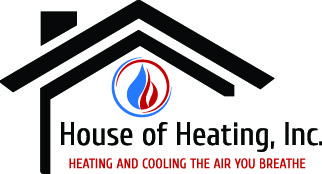
A furnace is almost always a background player at home, ensuring you're warm across the cold winter months. It regularly doesn’t get noticed until something goes wrong.
One source may be that your furnace has a cracked heat exchanger. It’s a potentially dangerous issue, so it’s important to know the signs of a cracked heat exchanger and what you can do if you are worried that is the problem.
What Is a Heat Exchanger in a Furnace?
A heat exchanger helps move heat from the combustion chamber of your furnace to the air that moves through the ventilation. It usually does this with coils or tubes that heat the air while acting as a barrier to keep gas produced in the combustion chamber, called flue gasses, from escaping out into your home.
Is a Cracked Heat Exchanger Dangerous?
Thanks to its central role, it shouldn't come as a surprise that a damaged heat exchanger can pose a risk. Cracks in the heat exchanger can allow dangerous gasses – like carbon monoxide, which can be lethal – to circulate across your home.
For this reason, never use your furnace if you think you're dealing with a cracked heat exchanger, as this could make your entire household ill. Contact an HVAC professional right away if you think your heater has a cracked heat exchanger that should be repaired.
Four Signs of a Cracked Heat Exchanger:
- Furnace shuts off: A crack in your heat exchanger can cause your furnace to switch off.
- Odd Smells: If the air coming out of your furnace has an intense chemical odor, it could be a sign gas is leaking through cracks in your heat exchanger. These byproducts, which will often smell like formaldehyde, are a major warning sign.
- Carbon monoxide alarm is triggered or you feel poisoning symptoms: If a cracked heat exchanger is relieving carbon monoxide into your home, your carbon monoxide alarm should go off or household members might start experiencing signs of carbon monoxide poisoning. Complications include headaches, dizziness, weakness, nausea, vomiting or feeling tired. If your alarm goes off or you feel sick, exit the home as soon as you can and then call for help.
- Soot: If you see black sooty collecting around the exterior of your furnace, it’s more evidence something may be seriously wrong.
What You Should Do if the Furnace Heat Exchanger is Cracked
If you believe your furnace has a cracked heat exchanger, call a pro well versed in furnace installation Marshfield right away so they can examine your system and, if needed, perform a furnace heat exchanger replacement. Costs should fluctuate depending on the situation, but estimates can roughly suggest $1,000 to $3,000.
However, the good news is that heat exchangers are often included in the warranty. It's a good idea to check the warranty paperwork on your furnace, as while the warranty won't always cover the entire cost of repairs, it could significantly reduce your bill.
How to Prevent a Cracked Heat Exchanger in Your Home
One of the best ways to avoid problems in your furnace overall is with consistent furnace maintenance. Furnaces offer the most benefits when they work efficiently. Calling a certified professional to check your furnace for old parts, clogs in the air filters and other likely problems can keep you from getting a big bill later on.
It’s also helpful to take a look at your furnace filters every few months – it’s recommended some filters be replaced every 90 days or sooner if they are dirty or grimy. While the filters aren't a part of the heat exchanger itself, the strain of drawing air through a clogged filter makes the entire furnace work harder to do its job. And the harder your furnace needs to run, the more strain pieces like the heat exchanger will experience.
